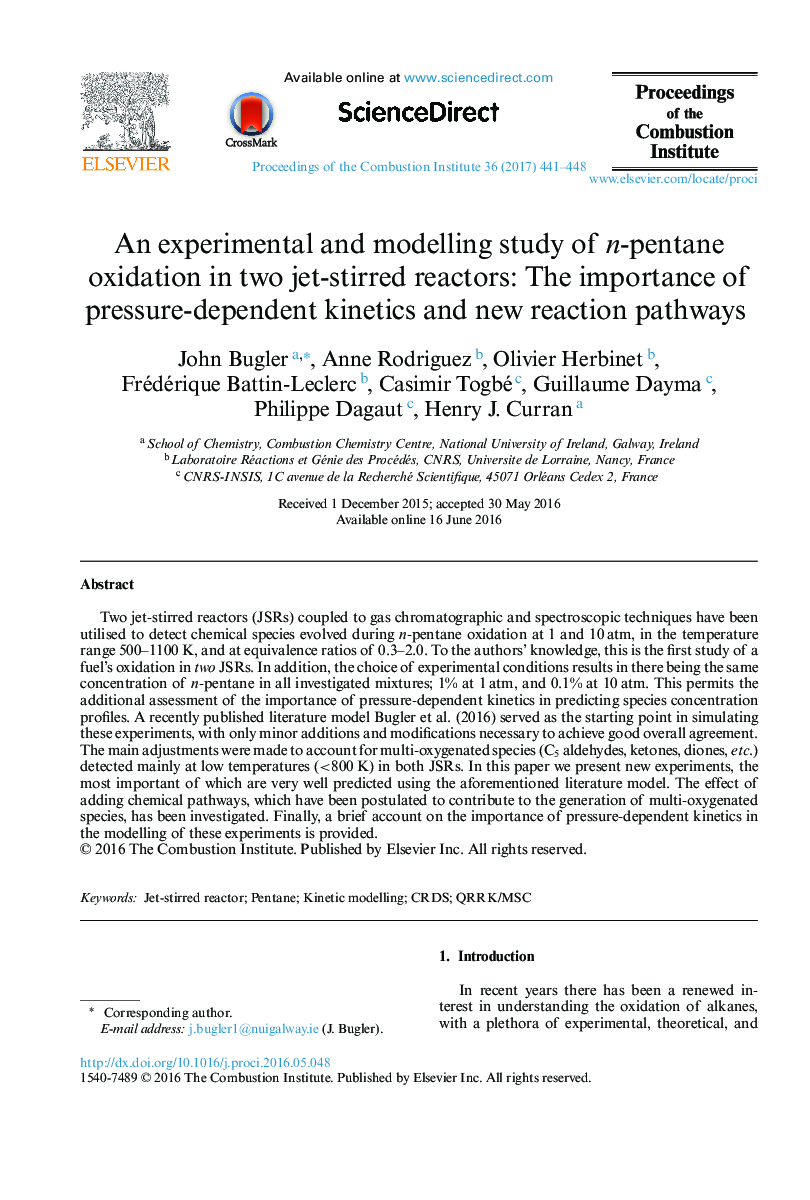| Article ID | Journal | Published Year | Pages | File Type |
|---|---|---|---|---|
| 6477938 | Proceedings of the Combustion Institute | 2017 | 8 Pages |
Two jet-stirred reactors (JSRs) coupled to gas chromatographic and spectroscopic techniques have been utilised to detect chemical species evolved during n-pentane oxidation at 1 and 10Â atm, in the temperature range 500-1100Â K, and at equivalence ratios of 0.3-2.0. To the authors' knowledge, this is the first study of a fuel's oxidation in two JSRs. In addition, the choice of experimental conditions results in there being the same concentration of n-pentane in all investigated mixtures; 1% at 1Â atm, and 0.1% at 10Â atm. This permits the additional assessment of the importance of pressure-dependent kinetics in predicting species concentration profiles. A recently published literature model Bugler et al. (2016) served as the starting point in simulating these experiments, with only minor additions and modifications necessary to achieve good overall agreement. The main adjustments were made to account for multi-oxygenated species (C5 aldehydes, ketones, diones, etc.) detected mainly at low temperatures (<800Â K) in both JSRs. In this paper we present new experiments, the most important of which are very well predicted using the aforementioned literature model. The effect of adding chemical pathways, which have been postulated to contribute to the generation of multi-oxygenated species, has been investigated. Finally, a brief account on the importance of pressure-dependent kinetics in the modelling of these experiments is provided.
